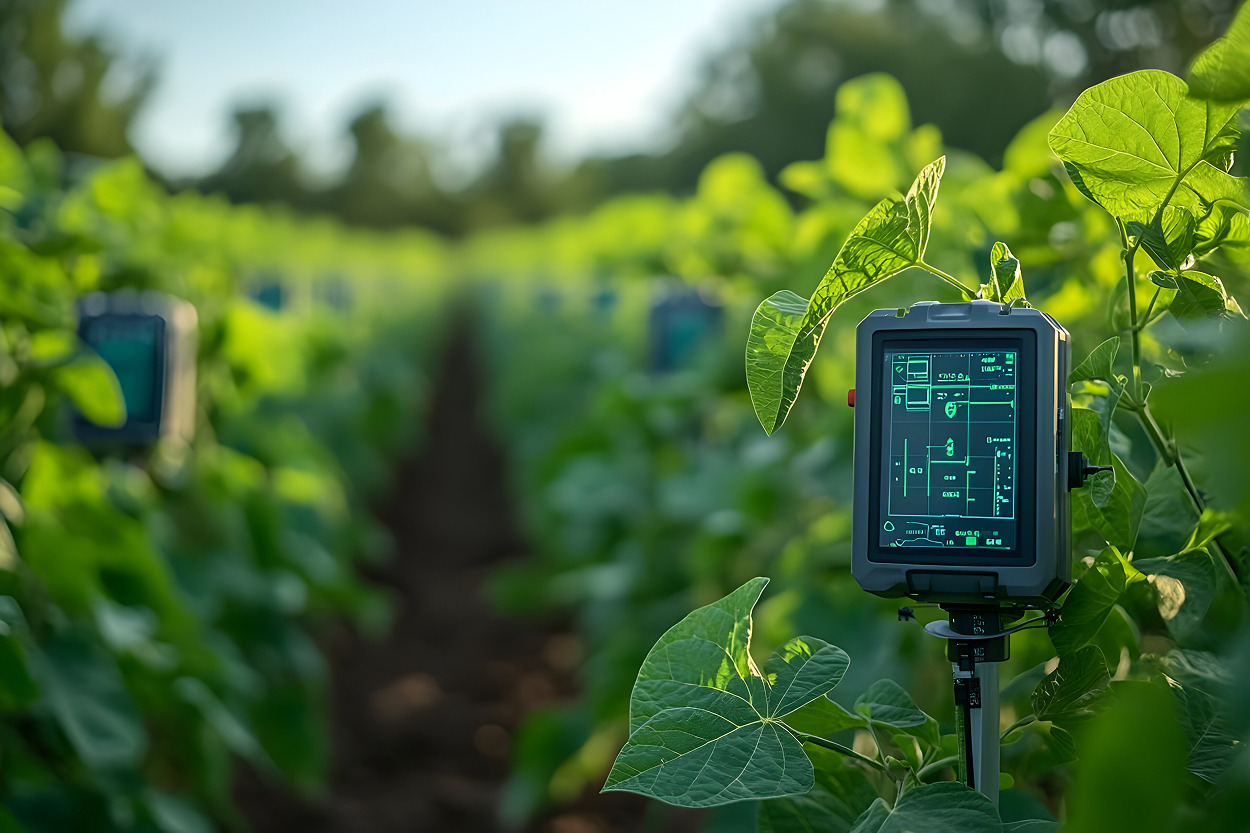LoRaWAN vs NB-IoT: Choosing the Right LPWAN for Smart Agriculture

In the age of precision agriculture, data is everything. From monitoring soil moisture and livestock health to controlling irrigation systems and machinery usage, real-time data enables smarter decisions and more efficient operations. But rural and remote environments often lack reliable high-bandwidth connectivity. This is where LPWAN (Low Power Wide Area Network) technologies like LoRaWAN and NB-IoT come into play.
Both offer long-range, low-power connectivity for sensor-based agriculture, but choosing the right one can make or break the viability of your solution. This article compares LoRaWAN and NB-IoT specifically for smart farming applications, helping agtech companies and system integrators make informed decisions based on technical and business constraints.
What is LoRaWAN?
LoRaWAN is a long-range wireless communication protocol built on LoRa (Long Range) modulation. It operates in unlicensed ISM frequency bands (e.g. 868 MHz in Europe) and supports public or private deployments. A typical LoRaWAN setup includes field-deployed sensors, LoRa gateways, and a cloud-based network server.
Its key advantages include low energy consumption, wide coverage (up to 15 km in rural areas), and full control over infrastructure in private deployments.
What is NB-IoT?
NB-IoT (Narrowband IoT) is a cellular LPWAN standard developed by 3GPP. It operates on licensed LTE bands and is maintained by mobile network operators. Devices connect directly to existing cellular towers, and data is routed through the operator’s core network.
NB-IoT is optimized for deep indoor penetration and massive device deployments, and it benefits from guaranteed QoS levels due to licensed spectrum use.
Key comparison for agriculture deployments
| Feature | LoRaWAN | NB-IoT |
| Spectrum | Unlicensed ISM | Licensed LTE |
| Deployment model | Private or public | Operator-managed |
| Coverage | 5–15 km (rural), depends on gateway density | Depends on operator’s base station availability |
| Power consumption | Very low | Low to moderate |
| Latency | 1–10 seconds typical | ~1.6 to 10 seconds |
| Data rate | Up to 50 kbps | Up to 127 kbps |
| Device cost | Low | Moderate (due to modem, SIM) |
| Infrastructure control | Full (private) | None (operator dependent) |
Use cases best suited for LoRaWAN
LoRaWAN excels in remote agricultural deployments where cellular coverage is weak or nonexistent. It is ideal for:
- Soil moisture and pH monitoring
- Long-distance livestock tracking
- Water tank level detection
- Air quality sensing in greenhouses
- Localized smart irrigation networks
Farmers or cooperatives can deploy private LoRaWAN gateways across their land, ensuring full control over the network without recurring connectivity fees.
Use cases best suited for NB-IoT
NB-IoT is better suited for applications that require reliable operator-managed infrastructure or are located within strong LTE coverage areas:
- Livestock health monitoring with large data payloads
- Remote tractor and equipment diagnostics
- Regulatory compliance sensors that need secure transmission
- Connection to cloud-based farm management platforms
- Monitoring cold-chain logistics for agricultural products
NB-IoT also benefits from integration with existing MNO security, OTA provisioning, and large-scale SIM management tools.
Other factors to consider
- Battery life: LoRaWAN typically achieves longer battery lifetimes due to simpler MAC layer and less frequent radio use.
- Scalability: NB-IoT supports more simultaneous devices per base station, but LoRaWAN scales better when deployed locally over wide fields.
- Security: NB-IoT has built-in operator-level security, while LoRaWAN requires careful implementation of encryption and key management.
- Data ownership: LoRaWAN enables complete ownership of data pipelines when deployed privately, which can be important for privacy-sensitive agribusinesses.
- Costs: LoRaWAN hardware is generally less expensive, and there are no SIM or subscription fees in private deployments. NB-IoT adds recurring connectivity and certification costs.

How Promwad supports LPWAN-enabled agtech solutions
Promwad designs and develops custom embedded systems for smart agriculture, including LPWAN-enabled sensors, gateways, and firmware stacks. Our capabilities include:
- Hardware design for low-power, weatherproof sensor nodes
- LoRaWAN and NB-IoT module integration and certification
- Custom base station and gateway design
- Embedded firmware with ultra-low-power sleep cycles
- OTA update infrastructure for remote devices
- Integration with cloud dashboards and mobile apps
- Enclosure and PCB design optimized for outdoor conditions
We help agritech companies reduce time-to-market and ensure their devices perform reliably in the field.
Conclusion
Choosing between LoRaWAN and NB-IoT for smart agriculture depends on your connectivity model, deployment location, and business model. LoRaWAN offers infrastructure independence and lower long-term costs, while NB-IoT provides managed connectivity and cellular-grade reliability.
If you're building next-generation agricultural solutions and need support with LPWAN hardware or firmware development, Promwad is ready to help. Let’s bring precision agriculture to the edge—one connected sensor at a time.
Our Case Studies in AgTech


